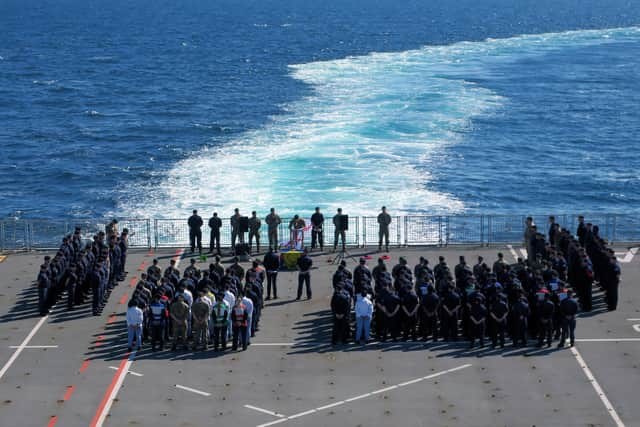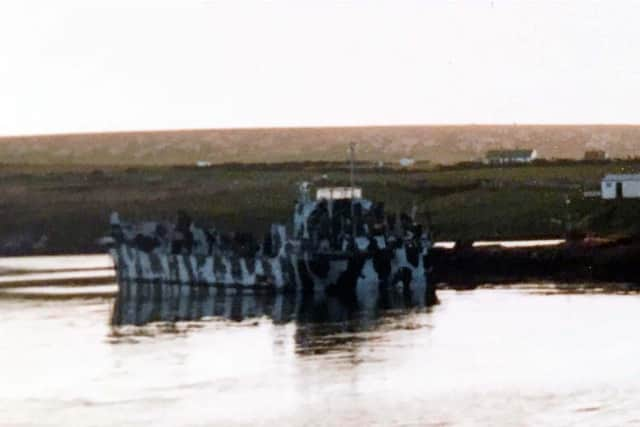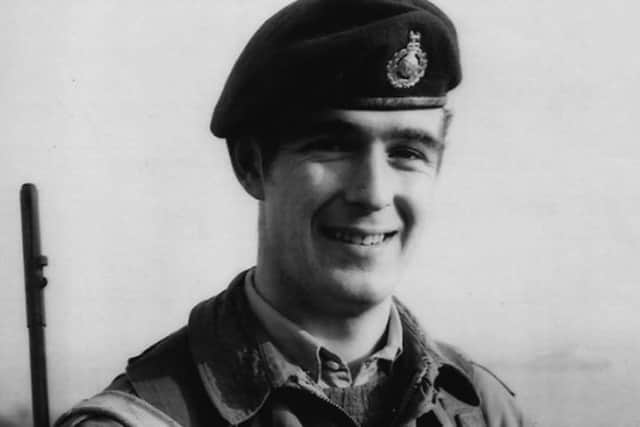Falklands 40: Royal Navy experts make painstaking bid to find 'lost wreck' of Landing Craft Foxtrot 4, sunk during the conflict
and live on Freeview channel 276
Through painstaking research, highly-accurate computer modelling, detailed understanding of weather and sea conditions, they hope to narrow down the search area based on where Landing Craft Foxtrot 4 was last sighted.
Six crewmen were killed when the vessel was bombed late on June 8 ,1982 – although the tragedy is often overshadowed by the attack on RFAs Sir Galahad and Sir Tristram earlier that same day, the biggest single loss of British lives in the conflict.
Advertisement
Hide AdAdvertisement
Hide AdIn the landing craft community her fate resonates to this day – underlined this week when the 40th anniversary of the tragedy was commemorated aboard amphibious flagship HMS Albion.


Her sailors and Royal Marines gathered on the flight deck for a service of thanksgiving as the ship returned to Plymouth following Platinum Jubilee celebrations in Edinburgh.
They were joined by Rear Admiral Jeremy Larken – in 1982 commanding officer of HMS Fearless, Albion’s predecessor and Foxtrot 4’s ‘mother ship’.
Admiral Larken said: ‘The remembrance of Colour Sergeant Brian Johnston and his team should be for ever with us as a vivid example of the risks we are invited take in war and take gladly – and of the ultimate sacrifice that for some is taken.’


Advertisement
Hide AdAdvertisement
Hide AdColour Sergeant Johnston earned a posthumous Queen’s Gallantry Medal for his action in the rescuing of sailors from the stricken HMS Antelope earlier in the Falklands conflict, rescuing more than 100 sailors despite fires raging on the frigate.
A small team of veterans of 1982 – including Rear Admiral Larken – and serving personnel have dedicated several years to trying to pinpoint the wreck site.
After the craft – which was ferrying Land Rovers and Royal Signallers from Goose Green to Fitzroy to support the final assault on the Falklands capital, Stanley – was bombed, the surviving two crew and nine soldiers were rescued by helicopter.
Attempts to take the crippled landing craft under tow were abandoned in the early hours of June 9.


Advertisement
Hide AdAdvertisement
Hide Ad‘The locations of all other ships lost in the conflict are known,’ said former HMS Fearless and 4th Assault Squadron landing craft officer Lieutenant Colonel Richard Thurstan.
‘The men lost on them have graves at sea that their families and friends can identify. The men of Foxtrot 4 have no known grave other than the sea – and finding her would bring overdue closure for the families.’
John Prime, in 1982 Navigator and Operations Officer of HMS Fearless, has pored over official documents, charts, the testimonies of survivors to pinpoint where the landing craft was attacked, and where, having drifted helplessly through the night, was last seen on the surface.
‘Where she went next has been a mystery for 40 years – when a search resumed after daylight on June 9, Foxtrot 4 was nowhere to be seen,’ he said.
Advertisement
Hide AdAdvertisement
Hide AdIf the craft didn’t drift over the horizon into the expanse of the South Atlantic, the wreck – about 25m long – probably lies in water 40 to 60m deep.
Once armed with the most likely wreck site based on the research, the goal is to request Royal Navy hydrographic and survey specialists to conduct a targeted search.
Comment Guidelines
National World encourages reader discussion on our stories. User feedback, insights and back-and-forth exchanges add a rich layer of context to reporting. Please review our Community Guidelines before commenting.
